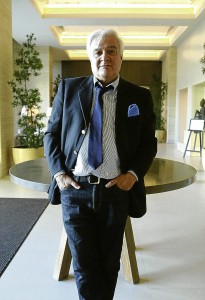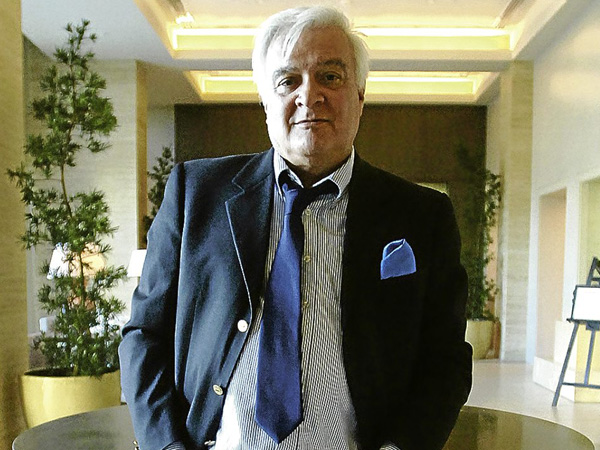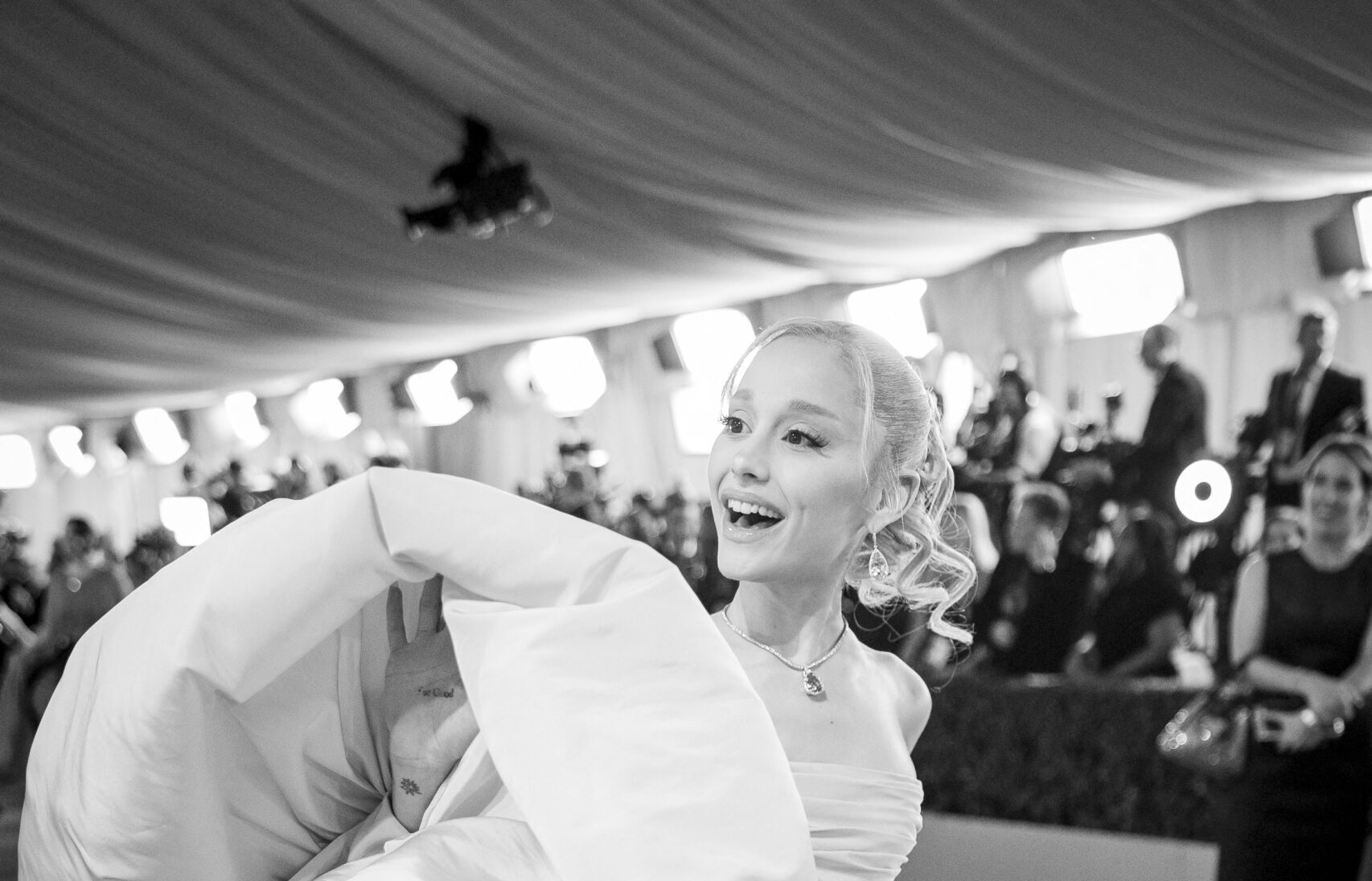
Rockwell Center has announced that its expansion in Makati will have a design team headed by the renowned Uruguayan architect Carlos Ott, the uncredited designer of Dubai’s Burj Al Arab.
Rockwell Land declined to reveal specifics about its newest project on the site once occupied by Colgate-Palmolive Philippines in the vicinity of Rockwell in J.P. Rizal, Makati. It will consist of residential and office towers.
The new development will be connected to Rockwell Center and is designed to match, even surpass, the latter in terms of certain features and amenities.
Ott, who has offices in his home city of Montevideo, in Toronto and Shanghai, was in Manila recently to discuss the project’s details with Rockwell Land.
Rockwell president Nestor “Tong” Padilla insisted on hiring Ott after the two met in New York after last October’s violent snowstorm.
“It was my South African friend, also an architect based in San Francisco, who hooked us up,” said the gregarious Ott. “The meeting almost didn’t push through because of flight delays. Mr. Padilla was flying in from San Francisco, while I was flying in from Toronto.”
After initial hitches, including an anxious Ott calling and waking up a jet-lagged Padilla in his hotel room an hour before the appointed time, the two eventually hit it off and struck a deal over breakfast.
“Although this is my first project in the Philippines, I’ve done other projects in the region,” he said. “This isn’t my first time to work in a tropical country, but it is my first time to work in an Asian country with unique Latino sensibilities. I’m really excited.”
Apart from China and Hong Kong, Ott has several finished and ongoing projects in Singapore, Phnom Penh and Jakarta. If given free rein to work on Rockwell’s expansion, he would go for green designs that maximize natural light and minimize use of electricity. Ott may seem unfamiliar with Philippine weather, but he’s aware of the numerous typhoons that visit the country every year.
Latino temperament
“I’ve actually studied the weather as well as the Filipinos’ Latino temperament,” he said. “There’s a need for plenty of open and communal spaces like balconies and terraces because Filipinos are very sociable people.”
In an increasingly globalized world, there’s a danger of building buildings that have become too homogenized not only in looks but also in function. Today’s architects, said Ott, should be careful because there are certain aspects in design and construction that aren’t interchangeable.
“You can’t do a project designed for North America in Africa, or one designed for South America in Europe. You have to be conscious of where you’re doing the project, your surroundings, the technology available in the place, and the people who would use it.”
Ott’s projects dot the entire globe, from North America to Asia and South America to Europe. Among his more famous landmark projects were the award-winning L’Opera Bastille in Paris, Union National Bank headquarters in Dubai, and the China Opera Houses in Guangdong, China.
One controversial project he initially did, but didn’t get credit for, was Burj Al Arab in Dubai. Ott charged it all to experience, as he blamed himself for the seeming injustice.
As one of the first waves of foreign architects who pioneered in Dubai’s building boom in the late ’80s, Ott was commissioned by the ruling sheik’s secretary and right-hand man to do an iconic building designed to put Dubai on the map.
“Back then, nobody knew where Dubai was,” said Ott. “I promptly designed a building inspired by sailboat and gave it to the secretary without signing it. The secretary, with a Swedish architect, showed the design to the sheik, who was then in London.”
The secretary told him to go back to Toronto and wait for his call. Months had passed, and no phone call came. When Ott flew back to Dubai to start working on other projects, he was surprised to find out that the secretary he had dealt with was now in prison for dipping his hands in the city’s coffers.
When he drove by the supposed site where his sailboat-inspired design was to stand, he was again taken aback to learn that construction had already begun without him.
“The sheik really liked my design, but since it was unsigned, his people didn’t know whom to call or give credit to,” said Ott. “A team of British designers had already started working on the future Burj Al Arab following my design. Lesson learned. I have no one to blame but myself.”
‘Size matters’ mentality
Ott didn’t name names, but he also shared stories of lucrative deals, mostly in the Middle East, that he had to turn down because they violated everything he stood for as an architect. He also didn’t subscribe to the “size matters” mentality now gripping Asia, as one city tries to outdo the other in building the tallest, most iconic structures.
“There have been many coming to me and asking me to build all sorts of projects,” he said. “One even wanted me to design a house just like the White House in Washington, D.C. Another wanted me to do a Versailles. I refused. It’s not about the money.”
Although he relishes being given carte blanche to design a project, he also welcomes inputs from clients. Architecture, he said, isn’t like painting where you are free to put whatever you want on the canvas. It’s about constructive collaboration with the client.
“Each project poses its own set of challenges,” he said. “A seemingly simple project like a house can be quite challenging when you have a couple, for instance, who can’t agree on anything, down to the color of their bedroom. And it’s not about the size, either. You’d be surprised that not a few of the world’s most beautiful architectural projects are quite small, compared to the huge buildings we have today.”
Asked to choose who among his “children” is his favorite, Ott was quick to respond: “The next one.” And that would likely include Rockwell’s expansion, as he and his local counterparts begin work on the project later this year.
“It’s only natural, because the next one would be the one who would be needing the most attention and nurturing,” he said. “I’m sure mothers out there would understand what I’m saying. But I mean it in a figurative way. It doesn’t mean that I’m pregnant.”









































